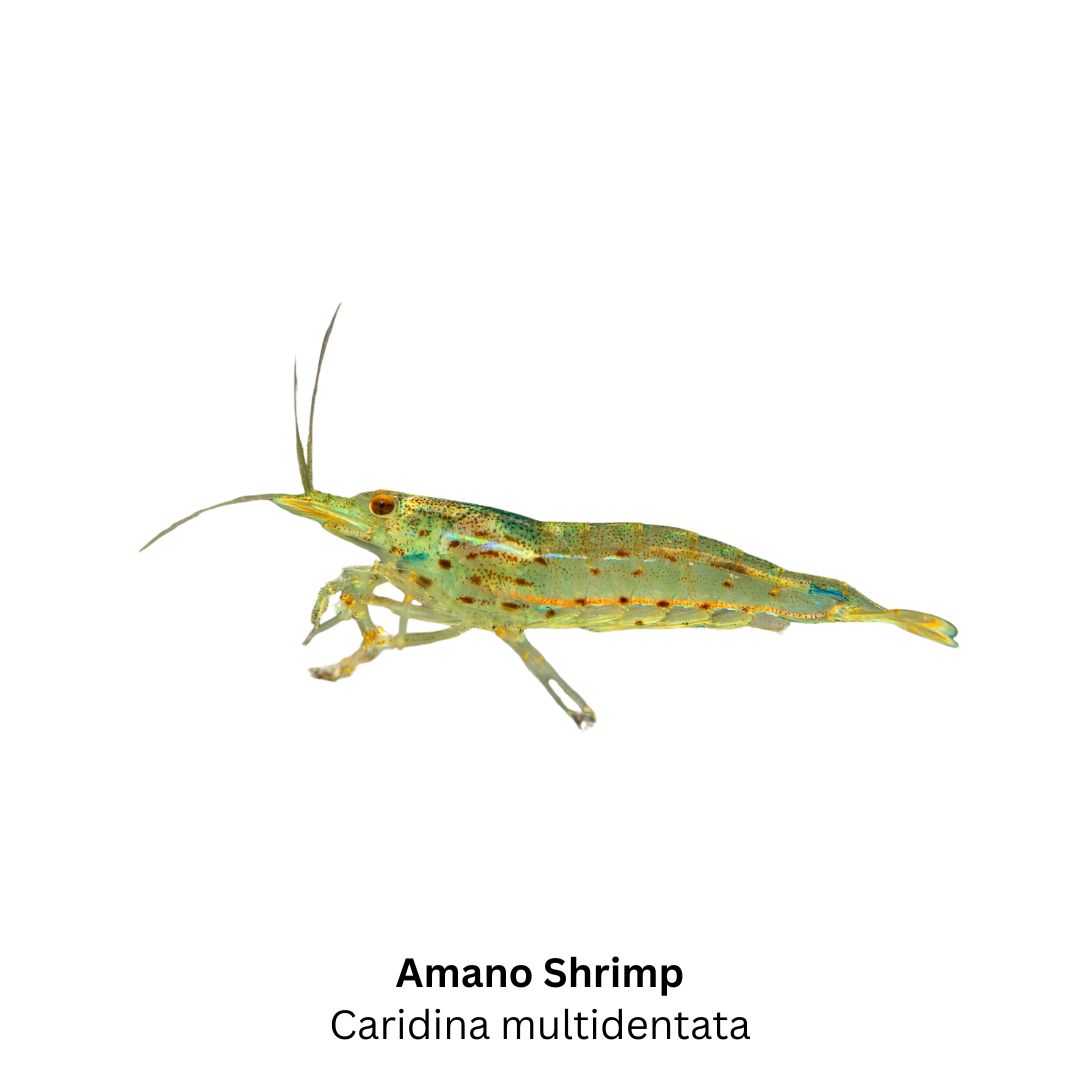Amano Shrimp: Species Profile
Characteristics
- Scientific Name: Caridina multidentata
- Family: Atyidae
- Origin: Japan and Taiwan
- Social Behavior: Peaceful, communal
- Tank Level: Bottom to mid-level
- Minimum Tank Size: 10 gallons
- Diet: Omnivore
- Breeding Method: Complex; requires brackish water for larvae
- Care Level: Beginner-friendly
- Preferred pH Range: 6.5 to 7.5
- Water Hardness: 6 to 8 dGH
- Temperature Range: 70 to 80°F (21 to 27°C)
Origin and Distribution
Amano Shrimp, scientifically known as Caridina multidentata, are native to freshwater rivers and streams in Japan and Taiwan. They were popularized in the aquarium hobby by aquascaping pioneer Takashi Amano, who utilized their algae-eating capabilities to maintain pristine tank conditions.
Colors and Markings
Amano Shrimp possess a translucent, grayish body adorned with a series of reddish-brown dots or dashes along their sides. A distinct white stripe runs longitudinally down their back. Males are typically smaller with a series of dots, while females are larger and display more elongated dashes.
Tankmates
Due to their peaceful nature, Amano Shrimp are compatible with a variety of tankmates, including:
- Small, non-aggressive fish such as tetras, rasboras, and guppies
- Other shrimp species like Cherry Shrimp
- Snails
It’s advisable to avoid housing them with large or aggressive species that may view them as prey.
Care
Amano Shrimp are hardy and adaptable, making them suitable for both novice and experienced aquarists. Key care considerations include:
- Tank Setup: Provide a well-planted aquarium with ample hiding spots using driftwood, rocks, and dense vegetation. A mature tank with established biofilm and algae is ideal.
- Water Parameters: Maintain stable water conditions within the preferred ranges. Regular water changes and efficient filtration are essential to keep ammonia and nitrate levels low.
- Group Size: Keeping them in groups of at least three to five individuals promotes natural behavior and reduces stress.
Diet and Feeding
As omnivores, Amano Shrimp have a diverse diet:
- Algae: They are renowned for consuming various types of algae, including soft green algae and, occasionally, black beard algae.
- Supplements: When natural algae is insufficient, supplement their diet with high-quality sinking pellets, blanched vegetables (such as zucchini or spinach), and occasional protein sources like bloodworms.
- Feeding Frequency: Offer food once daily, ensuring they consume all within a few hours to prevent overfeeding and maintain water quality.
Gender Differences
Females are generally larger and have a more rounded abdomen compared to males. The pattern of lateral spots also differs; females display elongated dashes, while males exhibit more uniform dots.
Breeding
Breeding Amano Shrimp in captivity is challenging due to their complex life cycle:
- Spawning: Females carry hundreds of eggs under their abdomen.
- Larval Stage: Upon hatching, larvae require brackish water conditions to develop, which is difficult to replicate in a home aquarium.
- Maturity: After several molts, juveniles metamorphose into miniature versions of adults and can be transitioned back to freshwater.
Due to these complexities, most Amano Shrimp available in the aquarium trade are wild-caught.
Further Research
For more detailed information on Amano Shrimp care, breeding techniques, and tank setups, consider exploring specialized aquarium literature or consulting with experienced aquarists.
FAQ
How long do Amano Shrimp live? With proper care, they can live between 2 to 3 years.
Can Amano Shrimp be kept with other shrimp species? Yes, they are generally peaceful and can coexist with other non-aggressive shrimp species.
Do Amano Shrimp require a heater? Maintaining a stable temperature within their preferred range is essential for their health, so a heater may be necessary depending on ambient conditions.


Reviews
There are no reviews yet.